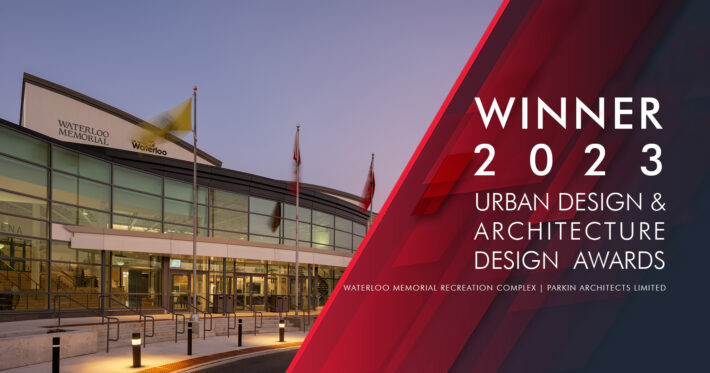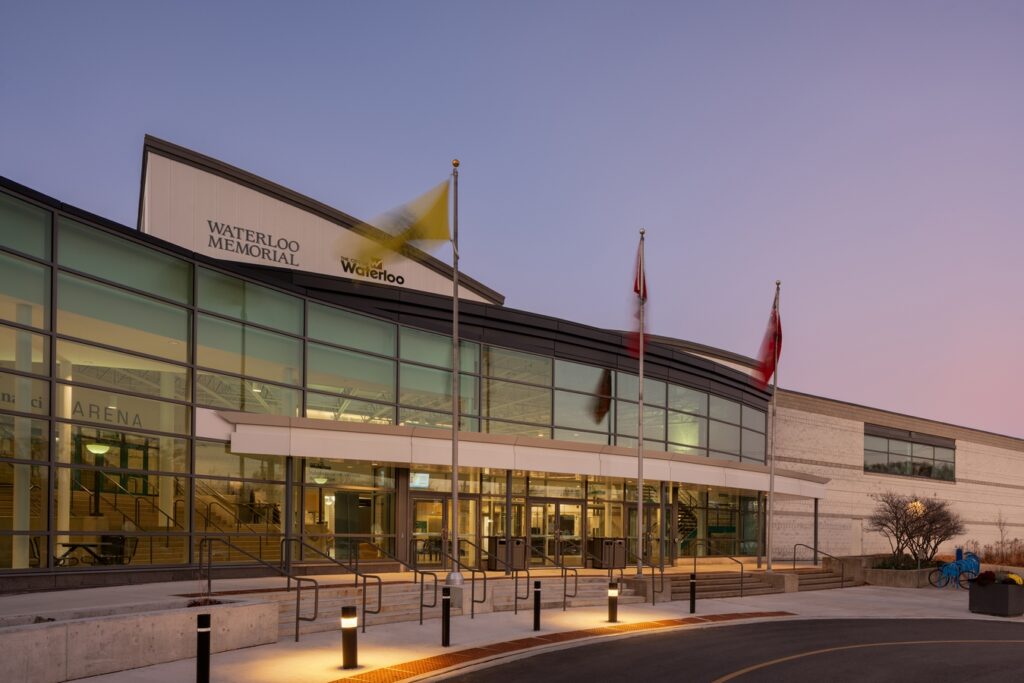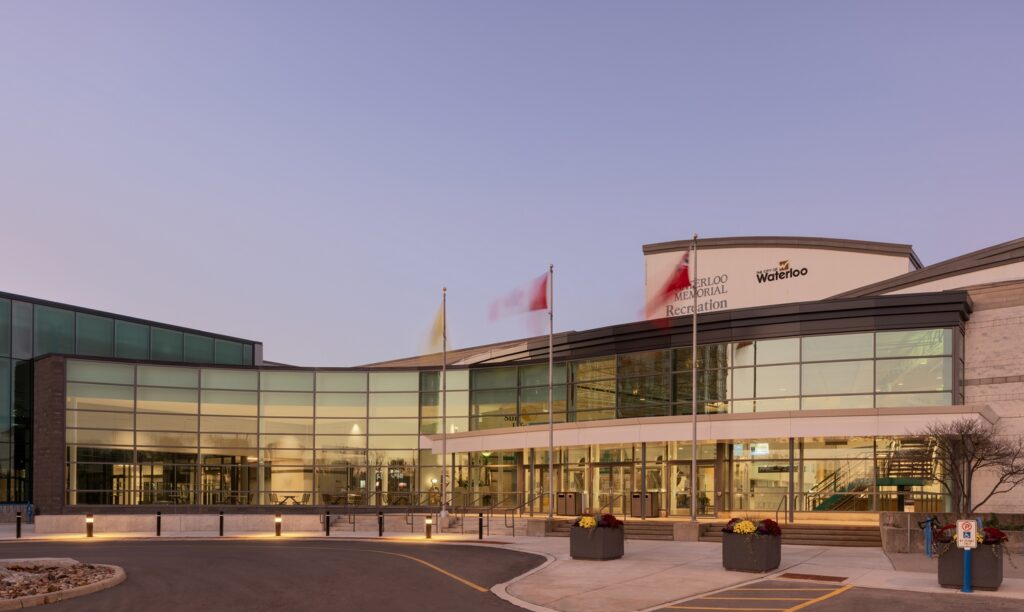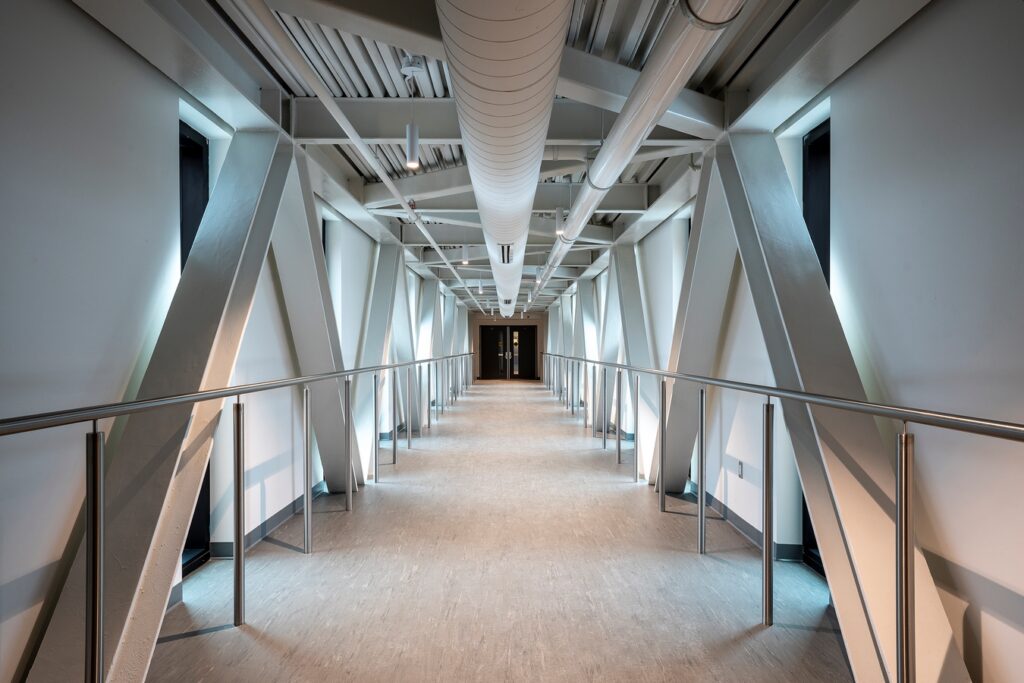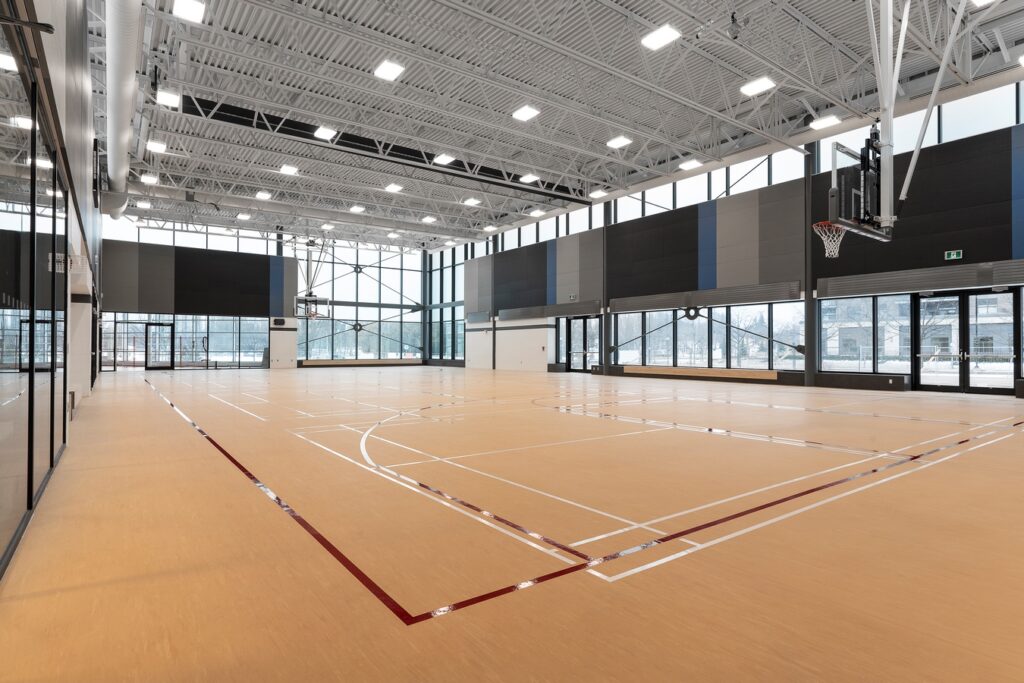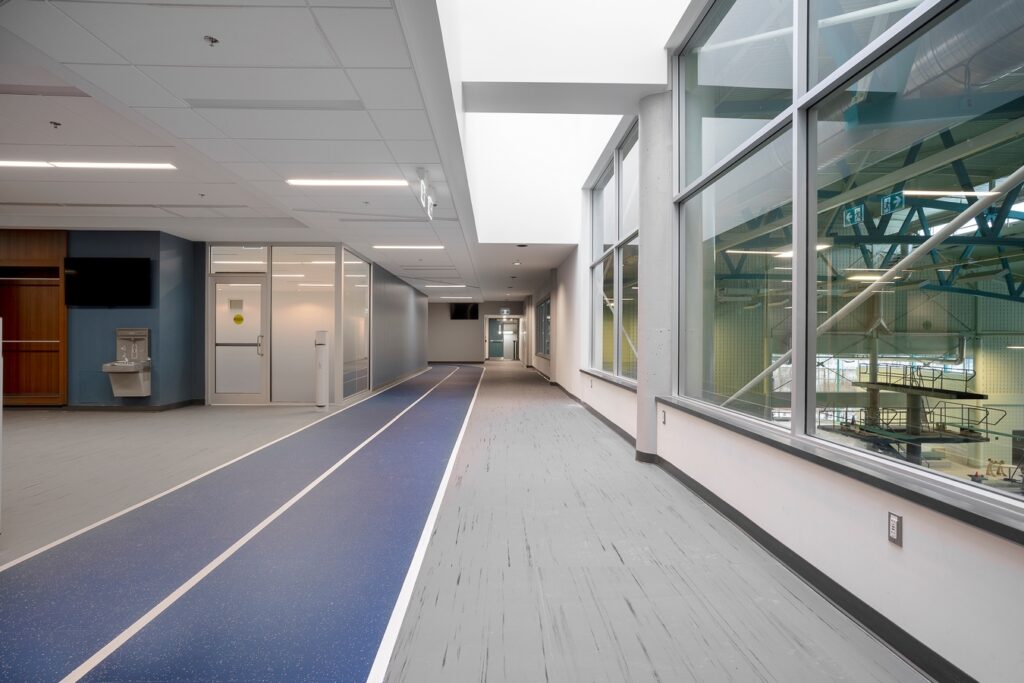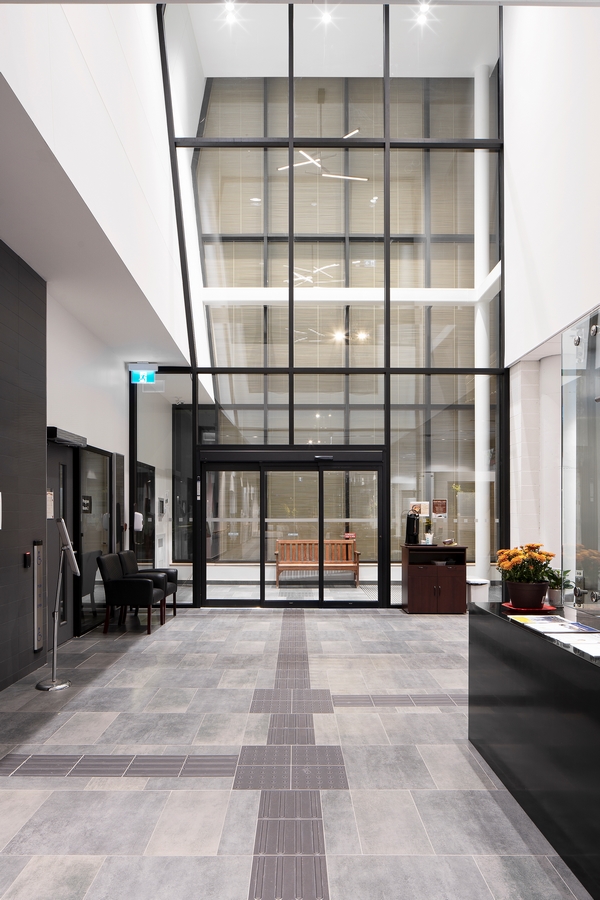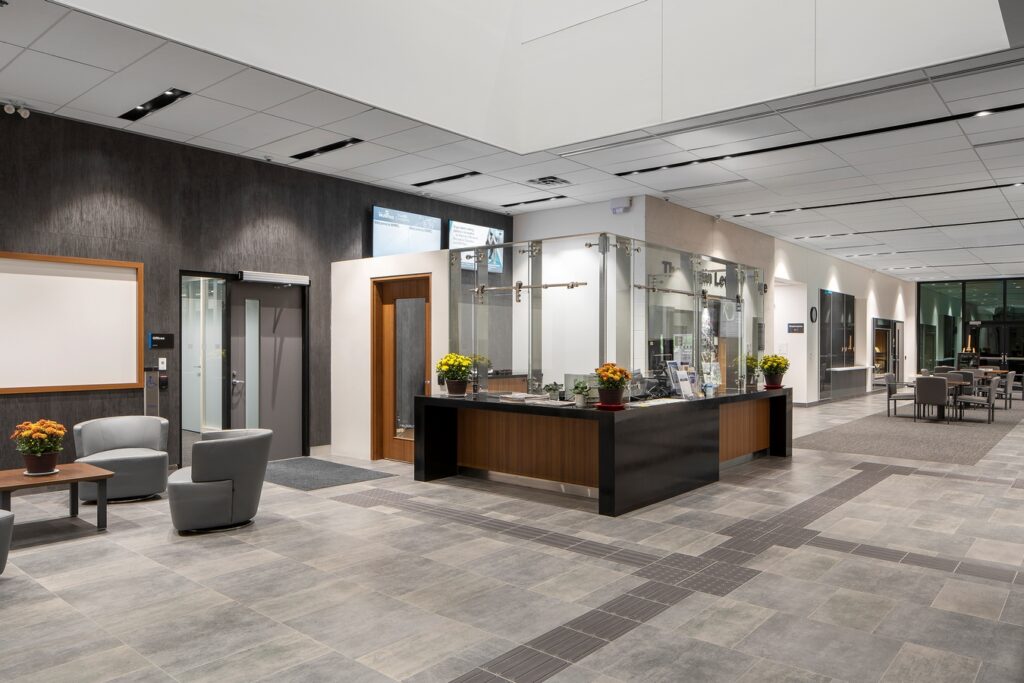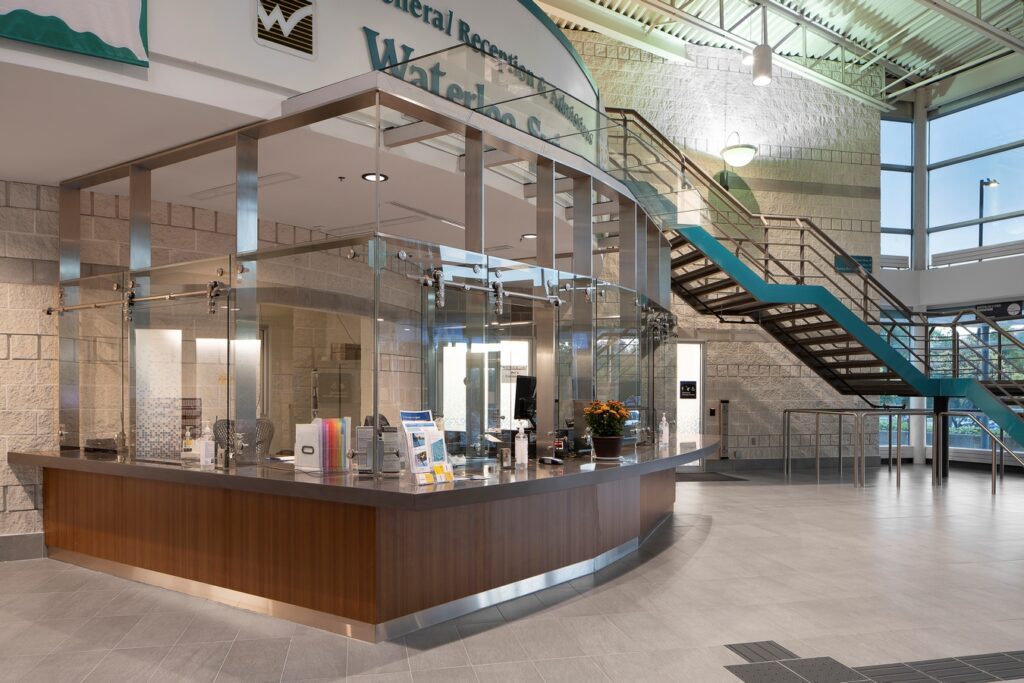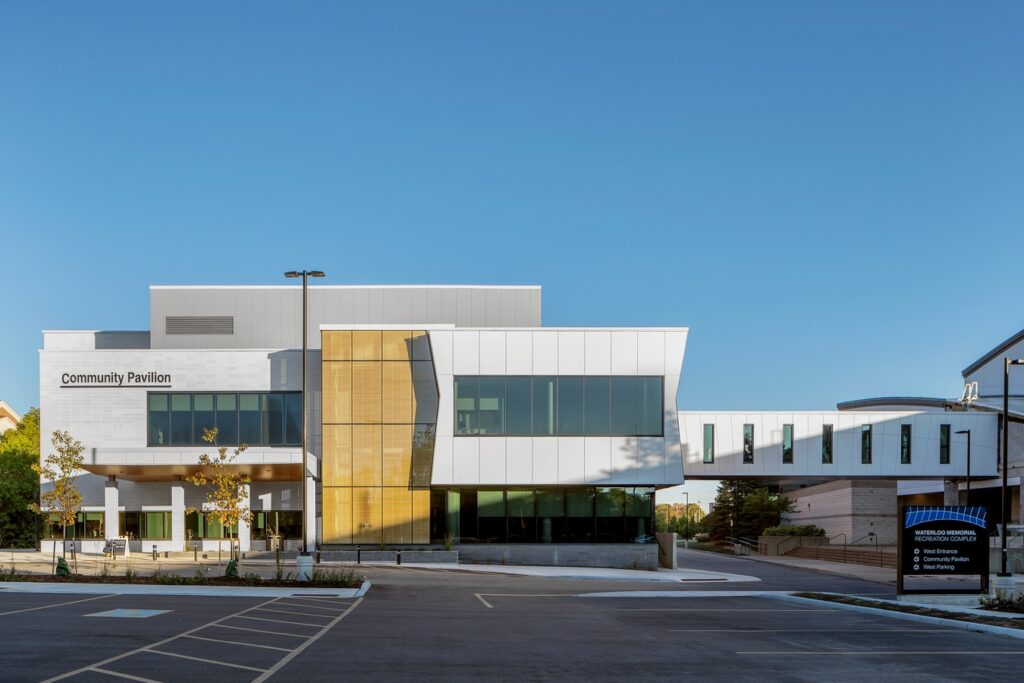As architect of record for the WMRC, (completed in 1993), Parkin is thrilled to have completed the Waterloo Memorial Recreation Complex Expansion project in September 2022. The two-storey expansion includes the Civic Front addition; a new gymnasium with support spaces, the renovation of existing multi-purpose and pool change room spaces, plus the new Community Pavilion connected via a new bridge to the existing complex.
Urban Design & Architecture Design Awards 2024: Entries Open!
Take your work to the next level. Register Now…
Gold 🏆 Winner
Urban Design & Architecture Design Awards 2023
Waterloo Memorial Recreation Complex
Recreation
Firm
Parkin Architects Limited
Architect/Designer
Mario Pistone
Design Team
Lind Nyman Project Director, Jason Aylsworth Project Manager, Ian Cheung Architect, Timothy To Intern Architect, Dorota Klimczak Junior Designer, Alireza Arabshahi Technologist, Aaron Colosimo
Location
Waterloo, ON
Country
Canada
Photographer/Copyright
©DesignSQ
Extensive renovations within the WMRC included converting the existing 800-person banquet hall to create a central fitness core and change rooms, expanding the capacity of the pool family changeroom through the reorganization of all pool change rooms, renovations of existing arena concessions and some finish upgrades within the main lobby and public corridor.
The Civic Front includes an activity court / gymnasium, lobby area, offices, and support spaces, such as lockers and change rooms. The facility accommodates sports including pickleball, basketball, volleyball, and other community events for use by all ages. This new civic front creates a new and transformed first impression of the WMRC.
A new Central Fitness Core is designed through transformation of the existing Hauser Haus Banquet Hall on the uppermost floor of the WMRC. The renovated area will accommodate a fitness programming area for activities like yoga, dance and other exercise programs including lounge space for transitions. The renovations will include provision of a purpose designed walking track to reduce demand conflicts of the hugely successful existing running track in the arena.
The Community Pavilion Addition and Bridge to the WMRC will provide a new home for the Older Adult Programs in a two-storey addition. The two-storey building includes a meeting/dining hall, program rooms, kitchen, lounge and program rooms for health, games, fitness, and multi-purpose programming.
Attention to interior details were essential to establishing character and the facility’s identity for its diverse functions and user groups. For example, the interior of the Community Pavilion is notable, having a minimalistic and timeless approach to materials, while the Fitness Core consists of more expressive elements such as colourful supergraphics to create a more visual interest. Using a different design approach for each of these spaces helps to define their character and create unique experiences for the community.
To address the overwhelming demand for the pool alternative change room, the pool changes rooms were reorganized and renovated to provide a larger family change room to maximize access by the community and capture new users of the Aquatics Centre.
The sustainability goals of the project included Savings by Design Grants, LEED Silver Shadow, and the City of Waterloo’s Green Policy. These initiatives focused on sustainable construction with the added goal of reducing greenhouse gas emissions and energy consumption by up to 50 per cent less than the base code benchmark.
Parametric analysis at the concept stage assisted with systems design. Design performance was validated by multiple energy models throughout the design and construction documents stages. A post-occupancy validation was also undertaken to verify that installation by the contractor supported energy targets. In the end, the project was successful in surpassing energy targets post occupancy, achieving a 47 per cent savings over the SB-10 (Ontario Building Code) benchmark.


